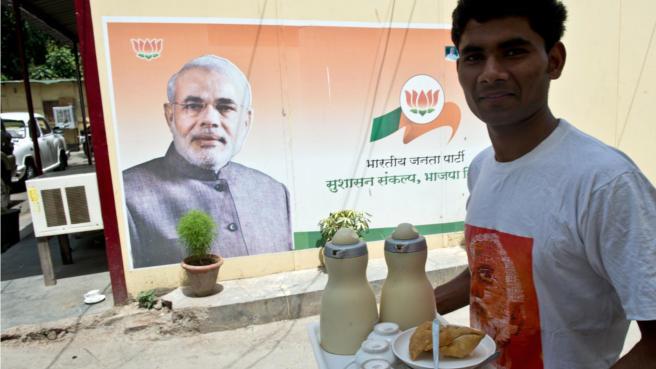June 3, 2012
How thousands of Indian women have their heads shaved to please the gods… only for the hair to end up as £3,000 extensions.

Selfless act: Pujari Aruna before and after having her head shaved at the Hindu temple of Tirumala Venkateswara
June 3, 2012
How thousands of Indian women have their heads shaved to please the gods… only for the hair to end up as £3,000 extensions.

Selfless act: Pujari Aruna before and after having her head shaved at the Hindu temple of Tirumala Venkateswara
The heat is damp and stifling, the sound that fills the air at once distinctive and surreal. Hundreds of cut-throat razors are at work, scraping rapidly, in a hall packed with girls and women, like so many sheep at a shearing.
Thick, dark clumps of hair flop down into baskets at their side until, just seconds later, the former owners look round, blinking and completely bald.
This is the Hindu temple of Tirumala Venkateswara on the coastal state of Andhra Pradesh where, every day, thousands of Indian women – and a few men – offer up their hair as a gift to Lord Venkateswara, the presiding deity.
It is also the starting place and principal provider for an astonishing industry, one that has seduced celebrities in Europe and America, and those rich enough to follow them. The trade in human hair is booming.
Temple hair, as it is known, has already found its way to hundreds of British salons, where it is sold in the form of real hair extensions costing up to £3,000 a time. One leading manufacturer boasts that horde of celebrities, including Mischa Barton, Eva Longoria and Frankie Sandford of The Saturdays, have used its products.

Desperate Housewives star Eva Longoria, who wears extensions made from real hair
To fans of extensions, the appeal of human hair is obvious: it both looks and feels better than the synthetic additions made famous by stars such as Jordan and Britney Spears. Moreover, the quality of Indian hair, which is strong and has for the most part never been subjected to Western shampoos, is known to be unusually good.
It is safe to say that the temple makes millions from the piles of thick black locks. Yet the women who once possessed the hair – many of them peasants – receive not a penny, donating their hair, instead, as a religious sacrifice.
The shaving ceremony and the sale of hair is not limited to this one holy site, but Tirumala Venkateswara attracts tens of thousands of pilgrims in a single day and is by far the dominant temple in the trade.
There are 18 shaving halls, all of them vast, and so big are the crowds that women and young girls can wait in the queue for up to five hours.
Six hundred and fifty barbers sit in lines on concrete floor, deftly tying up into ponytails the hair of women seated in front of them. Small children being carried by their mothers can be heard whimpering. They too are candidates for tonsuring – the shaving of the head as a sign of religious devotion.
 With a few expert sweeps of a razor, each head is shaved smooth and is then doused with water, washing away any blood caused by nicks from the razor. The average woman’s head yields about 10oz of hair, which is worth about £210.
With a few expert sweeps of a razor, each head is shaved smooth and is then doused with water, washing away any blood caused by nicks from the razor. The average woman’s head yields about 10oz of hair, which is worth about £210.
Most of the women seemed stunned, their hands patting at a scalp that minutes before had been covered in glossylocks. Then in a flash they are ushered away and the next candidate sits down.
Often, as they wait for their turn, the women’s faces are impassive, their lips pressed shut, as though trying not to cry.
Mayoor Balsara, chief executive of India’s largest exporter of human hair, Sona Devi Trading Company, says: ‘For poor rural women, their hair is their only vanity. They have saved up to make a once-in-a-lifetime journey. Thousands have made an oath to their gods – they may have asked to be blessed with a child or for a good harvest. Should their wish be fulfilled, they offer their most precious possession as a sign of gratitude.’
Right PIC: Frankie Sandford, of The Saturdays, is one of a list of celebrities to prefer human hair extensions
Pujari Aruna started her pilgrimage early one Sunday morning and, after walking in her bare feet for 30 hours, the 40-year-old housewife was waiting to go into the main tonsuring hall when we spoke. This is the fifth time Aruna has undergone the ritual and she is accompanied by 25 family members and friends who will also get their heads shaved.
‘Offering your hair to the god is a symbolic gesture of surrendering one’s ego,’ she says, ‘and a way of giving thanks for your blessings.’
Aruna says she is thankful because her husband, Pujari Nagraja, 45, made a swift recovery after an accident. She seems unconcerned by the fate of her hair after tonsure and shakes her head. ‘I don’t know what temple staff will do with it but I am sure they sell it to someone.’
Outside in the cool breeze sits housewife Anita Triupati, 28, who has travelled 350 miles, part walking and part spent on an overcrowded night train with her two daughters, Padma and Rajama and three generations of her family, all of whom will offer up their hair.
‘It has taken us years to plan this pilgrimage and everyone should make their way here once in their lifetime as it brings god’s blessing,’ she says.
‘This is the first time I have had tonsure and I am doing it because it is traditional in my family to come here and offer up our hair. I don’t know what will happen to my hair, but I know that local film stars wear wigs made from the hair and that some of it is sent to Hollywood as well.’
It is not just rural women who offer their hair to Hindu gods. The trend has been customized for well-educated, professional women from cities, too; instead of submitting to a full tonsure, they can donate a mere three strands to the temple.

Mischa Barton is said to have used products which used the so-called temple hair
Baskets filled with hair are collected every six hours and stored in a vast warehouse where it is piled knee deep. The hair, strong and healthy, has never been dyed or subjected to anything more abrasive than coconut oil and herbal soap.
Sometimes it has never been cut. The temple then auctions off the hair – even taking online bids – to exporters around the globe.
Mayoor Balsara transports the hair in fibre sacks by truck to Bangalore, 150 miles away. ‘We buy hair in metric tons,’ he explains. ‘A ton represents 3,000 women.’
Balsara buys about 50 tons a year and ships it round the world. India exports an estimated 2,000 tons a year. The best – or longest – hair will fetch at least £350 per pound. In his factories the hair is washed by hand in giant baths. Then the hair is laboriously pulled through long beds of spikes by hand to smooth it before being tied into neat bundles of 200 strands each.
The hair is then carefully packed into cardboard boxes and flown to Nepi in Italy where the pigment is removed, a process that sees the hair soaked in rows of small white baths for up to 20 days.
Great Lengths International, a leading manufacturer, supplies 1,300 salons in Britain alone, selling its products as ‘ethical hair extensions’ – ethical because the source of the hair is known.
After the bundles of hair have been colored, polymer bonds, which mimic the molecular structure of real hair, are attached to them. The bonds will be used to fix the strands to the customer’s head. Philip Sharp, UK managing director of Great Lengths says: ‘There are no official global statistics but it’s fair to say that hair has become a commodity as precious as gold, diamonds or oil. Some top salons order up to £100,000 worth of hair a year.’
The company says that European hair is too thin in diameter for the process; Chinese hair, meanwhile, is too thick and rigid for use with European clients.
Unfortunately, such are the profits to be made; there is a criminal side to the real hair industry. Real doubt persists, for example, about the origins of some hair sold from Eastern Europe. There are claims that women have been mugged for their locks. Victoria Beckham once said of her real hair extensions that, ‘[they] come from Russian prisoners, so I’ve got Russian cell-block H on my head’.
There has been a flourishing trade in human hair for thousands of years. In Egyptian times, men and women shaved their heads but wore wigs as protection from the harsh sun. Queen Elizabeth I famously sported a head of false tight red curls.
In India, temple hair has been sold for centuries – mostly to stuff mattresses, or for the chemicals it contains.
Temple officials argue that, unless they sell the hair, they would simply dispose of it.
The profit from the hair collected at the temples, an estimated £70 million a year, is spent on orphanages and hospitals. And for women such as Anita Triupati, the tradition of offering hair began long before the glamorous world of real-hair extensions.
‘My mother and grandmother came here before me and my daughters will do the same,’ she says. ‘We would never seek to be paid – we give our hair freely.’
Courtesy: dailynews







































































































